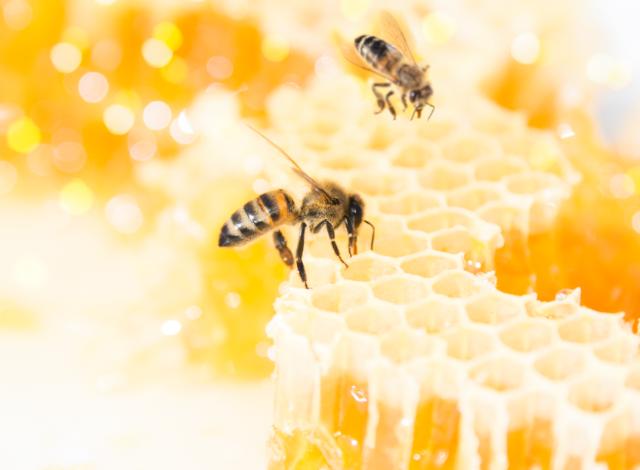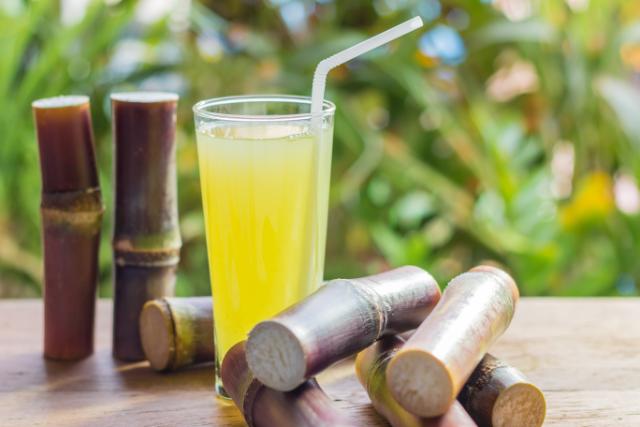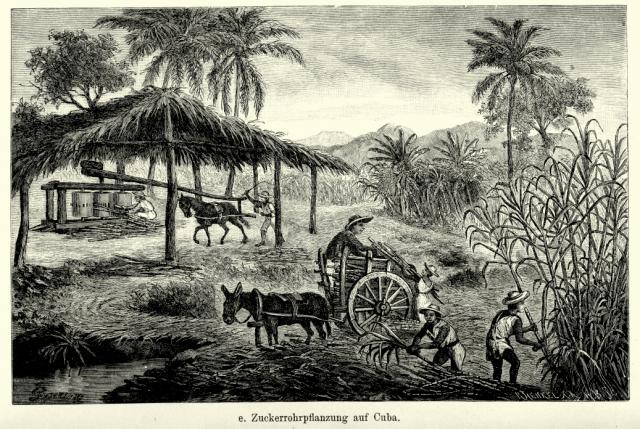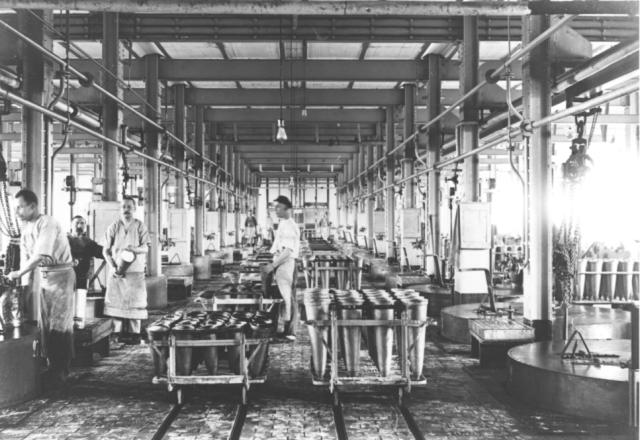Sugar through the ages
Sweetness is something humans have always sought out. Cave paintings from 15,000 years ago show people collecting wild honey. The production of sugar from sugar cane also has a long history, but it wasn't until the 19th century that we started extracting sugar from sugar beet.

Wild honey and sugar juice
Honey is the sweetener that has been used most in human history. In the Arona caves in Spain, 15,000-year-old cave paintings have been found, representing women collecting wild honey in the tree tops.
Sugar cane is a plant that requires a warm and humid climate and originates in the tropical parts of south and southwest Asia. Today's sugar cane can grow up to four feet high, but the original wild plant was considerably smaller. It is believed that there were crops in New Guinea as early as 6,000 BC.
At first, people chewed the sugar cane as it was, or they made freshly-squeezed sugar juice. The green beverage is still today a popular thirst quencher in many places where sugar cane is grown, preferably with a splash of lemon to balance the sweetness.

White gold from the colonies
In 500 BC in India, techniques were developed to extract pure sugar from the sugar canes. In the 700s, the Arabs (the word sugar originated from the Arabian "sacks") brought sugar cane to the Mediterranean, and in the 1400s Columbus took sugar cane to the West Indies.
In the 17th and 18th centuries, most European countries had colonies in the southern hemisphere where sugar cane was grown. As a rule, the cane was processed into raw sugar on site on the plantation and then shipped to Europe for its final refinement into "the white gold". But, sugar was still very much a luxury only for the well-off.
Europe gets its own sugar
At the beginning of the 19th century, Napoleon blocked the trade routes across the seas, which made importing cane sugar into Europe difficult. Now, people began to search for a way to grow sugar in a colder climate.
In 1747, the German chemist Marggraf had shown that sugar, which was identical to that from sugar cane, could be extracted from fodder beet. His student, Franz Carl Achard, continued this work and, after finding a beet with a higher sugar content (6-8%) - sugar beet, he founded what is commonly considered to be the world's first sugar beet farm in 1801.
Through plant breeding, a sugar beet was gradually developed with a sugar content as high as that of sugar cane (16-19%) and, when production also received state support, a new era in the history of sugar began. In 1880, sugar beet amounted to 63% of the global sugar production.

A brand with history
Dansukker is the leading brand for sugar products in the Nordic and Baltic countries. It is a brand that stands for quality, craftsmanship and pleasure and which reflects a long and proud history.
From the 1850s, sugar beet production began to gain momentum in Denmark and Sweden, and this is where Dansukker has its roots. Through mergers of a number of small sugar mills and refineries, De Danske Sukkerfabriker was founded in 1872 and Svenska Sockerfabriks AB in 1907.
The Danish and Swedish operations merged in the late 1900s and, since 2000, our products are sold under one brand - Dansukker - to around 30 million consumers in the Nordic and Baltic countries. The company behind Dansukker is called Nordic Sugar and is part of the Nordzucker Group.

Gilt edged now as then
Until the 1940s sugar was produced as sugar loaves. They weighed up to 15 kg and were this shape because the sugar was poured into cone-like moulds with a hole on the bottom where the liquid ran out. The loaves were cut into smaller pieces in the shops.
In the Nordic region, we do not eat more sugar today than 50 years ago, but the consumption patterns have changed. During the post-war period, increasing numbers of women went out to work. We started buying ready-made food and eating out - and as a natural consequence, households were no longer the major sugar buyers.
Over the last few decades, there has been more and more interest in making things from the basics, and "home-cooking" has also had a renaissance. We get more than flavourful pleasures from baking our own cinnamon buns, or making our own jams or preserves. It's also a way to work with our hands, to relax and to do something completely different from our everyday routine.
